 Your new post is loading...
 Your new post is loading...
Fresco is a lot like Uber. But unlike similar apps where you request a car, takeout, or a even a dog walker, Fresco puts a call out for a photojournalist. A newsroom posts a request for video of, say, a crime scene, and a Fresco user in the area can accept, take a video of it, and upload it to Fresco. If the news outlet uses it, the Fresco user gets paid $50.
TV news stations across the country are using the app, but Fresco is particularly appealing to KTBY, a station in Anchorage, Alaska. Alaska is a big state, and many of KTBY’s viewers live in remote villages that are hours away by plane. It’s hard to cover those communities without spending a ton of money and time. In a Fresco promotional video, Scott Centers, COO of Coastal Television Broadcasting Company, which owns KTBY, marvels that Fresco offers an affordable alternative.
Wired magazine recently published, Keeping Up with the Times, a story about the New York Times and its slow & painful transition to a digital first publication. “It’s to transform the Times’ digital subscriptions into the main engine of a billion-dollar business, one that could pay to put reporters on the ground in 174 countries even if (OK, when) the printing presses stop forever,” Gabriel Snyder (one of my favorite writers, by the way) wrote in his in-depth feature, which is worth reading.
After reading the piece, I thought let’s see how the Times is really doing — by the numbers. With help of Nima Wedlake, I came up with data to chart the progress made by the company, to see how far it really is from its transformation into a billion-dollars-in-digital-business. Have a look:
The company reported revenue of nearly $1.6 billion in 2016 — remarkably consistent with prior years. But under the surface, the mix of revenue is changing dramatically as revenues from its print advertising business continue to decline....
It’s been a remarkable year for the nation, and its press. Transfixed by the Trump phenomenon, election anxiety has all but consumed us. But soon, what has felt like a national colonoscopy will soon be over, and the press will march (or at least step) forward. As we consider the most newsworthy U.S. press happenings of this year, let’s start projecting forward to 2017. Tronc may well disappear early into it, but in a sons-also-rise scenario, the Murdochs and the Sulzbergers maintain center stage, and the future of Gannett and GateHouse — two companies that collectively own almost one in five U.S. dailies — becomes even more important. Let’s take 10 storylines of 2016 and extend them into the year ahead....
Local daily newspaper reporter?
How soon will we have to add this once-stable occupation to the list of jobs that once were — occupations once numerous that slid into obsolescence? (Not to mention the even more colorful spittleman [hospital attendant], rotarius [wheelwright], and hamberghmaker [horse collar maker].)
In this morning’s released annual census, the American Society of News Editors found its first double-digit decline in newsroom count since the Great Recession of seven years ago. Newsroom jobs dropped 10.4 percent — down to 32,900 full-time journalists at nearly 1,400 U.S. dailies, 2014 over 2013. That’s the loss of 3,800 jobs in just one year. (Detailed table at bottom of this column.)...
There are already strategic choices facing the organization, specifically the fate of the World Service, though the report from parliament may signal its future is relatively safe. Either the World Service will need to grow more, or it will need to be cut back to basic, and cheaper, levels and focus resources on other key parts of the BBC charter.
The report is more firm on quality over quantity, putting it at odds with a bulk of news websites currently bombarding Facebook and Twitter with hundreds of links to hoover up any potential clicks for advertisers. Because the BBC within the UK does not allow advertising on any of the channels or websites, the need for clicks is merely to prove they are serving the public. That allows a different emphasis for news.
This is not a report for the public, though it is publicly available. Even as a reporter, I still haven’t worked out what some of the buzzwords mean in terms of day-to-day news journalism. Just as the Leveson Report in 2012 was at least a decade too late and barely touched on the Internet, the Future of News report feels late. Being that it is only the first part, it may be that the second part will offer more specific and comprehensive forward-looking proposals....
Most surveys regarding cable news channels focus on ratings and the opinions of their viewers. However, a recent poll conducted by the Brookings and Public Religion Research Institute sought the views of all Americans toward all news sources in the nation.
A mere 5 percent of the respondents called the left-wing MSNBC cable channel their “most trusted” TV news outlet. On the other end of the spectrum, the Fox News Channel was named by 25 percent of the people surveyed, surprisingly more than the 23 percent who pointed to the “mainstream media” broadcast networks and the 21 percent who said they trust the Cable News Channel....
For a moment, let’s not focus on the delicious irony of Buzzfeed breaking the second biggest news about The New York Times this week. The site -- which many a Times staffer probably sniffs derisively at -- uploaded the paper-of-record’s entire 91-page “Innovation Report” that calls for de-emphasizing print in favor of a more sophisticated approach to digital. If you’re in digital, it’s even more intriguing than the news on Wednesday that executive editor Jill Abramson had been unceremoniously shown the door.
More than anything else, the report points to the Times’lackluster, scattershot approach to digital innovation, particularly in audience development, an imperative when so much content and readership comes from the act of sharing. In one of its many trenchant-but-obvious observations, it points out that “our digital content needs to travel on the backs of readers to find new readers.”...
Kara Swisher, outspoken tech journalist, has a lot on her mind....
And then there’s you, whose wife, Megan Smith, is a VP at Google. I don’t have her money. Any of it. Which, I know, is stupid—she has a lot. We split everything 50/50. I went out of my way not to take her money because I wanted to make a point: I take it seriously. I don’t write about Google except to insult the company. Someone actually said once that I’m in the camp for Google, so I sent them my pieces, and they said, “You must have problems in your marriage because you’re so mean to Google.” I was like, “I do not, but thank you so much.” They were like, “Seriously, you could be nicer; they are pretty fantastic,” and I was like, “Not to me. I think they’re pretty dangerous and thuggish.” I’ve always said that...
Pew's annual omnibus report finds that the transition to digital, and the influx of new money and new ideas, only represents a sliver of activity in the broader media.
In Pew Research Center’s latest State of the News Media report, just out, you get a glimpse of how the worlds of journalism and technology are continuing to merge and the impact that convergence has on the business and editorial prospects of media companies.
A majority of Americans now say they get news through a digital platform: 82 percent reported using a desktop or laptop, while 54 percent got news through mobile devices, according to Pew. Half of social media users share or repost news stories, while 46 percent discuss news on those sites. Audiences are also spending more time watching their screens: 63 percent of U.S. adults now watch online video, and of that, 36 percent watch news video.
At the same time, the companies that are helping to redefine digital news are expanding aggressively: Pew estimates that digital news operations, from the small hyperlocal shops up to the likes of ProPublica, The Huffington Post, and Vice have produced almost 5,000 full-time editorial jobs. Not enough to make up for a decade of losses in newspapers, but significant....
IT’S WELL KNOWN AMONG THE SMALL WORLD of people who pay attention to such things that the liberal-leaning reporters at The Wall Street Journal resent the conservative-leaning editorial page of The Wall Street Journal. What’s less well known—and about to break into the open, threatening the very fabric of the institution—is how deeply the liberal-leaning reporters at The New York Times resent the liberal-leaning editorial page of The New York Times.
The New York Observer has learned over the course of interviews with more than two-dozen current and former Times staffers that the situation has “reached the boiling point” in the words of one current Times reporter. Only two people interviewed for this story agreed to be identified, given the fears of retaliation by someone they criticize as petty and vindictive.
The blame here, in the eyes of most Times reporters to whom The Observer spoke, belongs to Andrew Rosenthal, who as editorial page editor leads both the paper’s opinion pages and opinion postings online, as well as overseeing the editorial board and the letters, columnists and op-ed departments. Mr. Rosenthal is accused of both tyranny and pettiness, by the majority of the Times staffers interviewed for this story. And the growing dissatisfaction with Mr. Rosenthal stems from a commitment to excellence that has lifted the rest of the Times, which is viewed by every staffer The Observer spoke to as rapidly and dramatically improving....
David Carr’s weekly column for The New York Times carries an intriguing title: “The Media Equation.” With 430,000 Twitter followers, he’s a unique journalist exploring the world of media for the larger Times brand, with its 9.5 million followers. It’s similar to the 1,200 individually branded FORBES contributors — and staff reporters, too — who now write about specific business topics under our 96-year-old umbrella brand.
I love the rubric attached to David’s newspaper work. FORBES itself is trying to figure out the media equation in an era when anyone can publish anytime — no trucks, planes or satellites required. Our still-evolving solution disrupts century-old newsroom thinking and processes. It also breaks with tradition in how certain marketing messages are sold and integrated on our growing news platform....
This is what UPI's 100 years of journalistic excellence has pathetically come down to.... - 4 of its top stories are about misbehaving celebrities. The other is about whether a naked photo that went viral was staged. - 4 of its top stories are about naked people; 2 of its top stories contradict each other. And considering that the 5th story could have been fact-checked by just watching the video in question, that means UPI ran a story for hits without even watching the video. - 3 of the stories are not even about Miley Cyrus, they’re about celebrity reactions to her routine....
In the wake of the Boston Marathon bombing one commenter called it a “watershed moment for social media” – but not in a good way. “Legions of Web sleuths cast suspicion on at least four innocent people, spread innumerable bad tips and heightened the sense of panic and paranoia,” wrote Ken Bensinger and Andrea Chang in the L.A. Times. In a similar post, Alan Mutter quipped that crowd reporting after the Boston Marathon went from critical mass to critical mess.
Recent events like Hurricane Sandy and the Boston marathon bombing have cast a harsh spotlight on the brave new world of breaking news and highlighted the critical need for better tools and techniques for verifying and making sense of the flood of information these events produce. This has all played into the ongoing debate about whether the Internet and new technology erode our standards and our trust in newsgathering....
|
“In a world where we had control of such things,” Tom Jolly, the associate masthead editor at The New York Times, told me in an email, “we’d break the big stories early in the day, when more people are online.” This dynamic is, in a strange way, a throwback. As Matt Pearce, a national correspondent for The Los Angeles Times pointed out in a string of tweets Wednesday night, “it's like we’ve bizarrely returned to the era of the evening edition.” The news alert that The New York Times distributed to readers’ cellphones Wednesday night. About one hour after Times readers received a news alert Wednesday night, The Washington Post notified readers of its latest scoop. In the late 19th and 20th centuries, the evening edition was the newspaper you grabbed for your commute home from work. Because it was published in the afternoon, it was the best way to get the most up-to-date news in print. After all, by the time the work day ended, that day’s morning paper covered events that had taken place at least a full day before....
The 2016 election exposed a significant crisis for U.S. democracy: the failure of our news media system.
This was an election in which false news was consumed as if true; in which polls were significantly off-base; in which journalists missed the stories both of Trump supporters, who came out in unanticipated numbers, and former Obama voters, who defied predictions to stay home.
The easy response, in the wake of these multiple failures, is to focus on one specific weakness. If only journalists had interviewed more white people in the Rust Belt! If only pollsters had looked at a different data-set! If only Facebook were not so dominant, or fake news sites so plentiful…
Such essays in search of simple answers represent no more than collective wishful thinking. Systemic failures have systemic causes. Repairs to the system may not be enough. We need to put time and resources now into transforming our news media system.
Why did we not know that voters in the Rust Belt were willing to vote for an anti-regulation racist populist, even when doing so might go against their values and self-interests? Likewise, why did news organizations fail to anticipate what appears to be a lower turnout of black voters in North Carolina (with its new voter suppression laws)?
It’s not that journalists in those communities were not doing their job; it’s that there are very few journalists left to tell the stories of those communities....
Some 23 per cent of news articles contain a social media embed, and 10 per cent of these embeds have either been modified or removed by their author since the article's publication, shows a report released today by SAM.
Social media curation platform SAM analysed one million web pages using its Report Card tool, focusing on North American news sites such as New York Daily News, Fox News, Vox, CNN or Forbes, to find out more about the role social media plays in newsgathering today.
The Report Card is available for free and enables publishers to find out how many social media embeds are currently on their websites and whether they have broken or they have been edited since publication....
For traditional media companies looking for an alternative, Blendle may have an answer. The website essentially acts as “Spotify for journalism.“ It’s a reinvention of the newsstand, built for the Internet, where readers pay by the article instead of per issue or through a monthly subscription.
This all occurs seamlessly in a way that prioritizes the user: your credit card information is stored on the site for easy payment, and an unorthodox refund option allows users to get their money back if they’re not satisfied with the piece.
Traditional publishers seem to be excited by Blendle’s potential to provide a desperately needed new revenue stream. The New York Times (a Blendle investor), the Wall Street Journal and the Washington Post have already signed up, and more American publishers are likely on the way...
Storyful recently launched a new Newswire to some of the biggest newsrooms around the world. Today, Chief of Product Adam Thomas (@datatheism) outlines what's new. Modern news is evolving. Journalists need to find news fast.
This is where the magic happens. Essential videos, images and embedded social media, all verified by Storyful’s journalists and augmented with context, dates, geodata, maps, local photographs, corroborating social media and – crucially – contact information for sources, so that journalists can follow up, cross-check and create their own unique angle.
The journey from Newswire to article (or TV segment, or online video package, or listicle, or …) is vastly improved, with the aim to be as frictionless as possible. Where available, every piece of media now has download, share and embed buttons. If a content creator has opted to license their content, you contact us for instant guidance on prices and usage....
A 96-page internal New York Times report, sent to top executives last month by a committee led by the publisher’s son and obtained by BuzzFeed, paints a dark picture of a newsroom struggling more dramatically than is immediately visible to adjust to the digital world, a newsroom that is hampered primarily by its own storied culture.
The Times report was finalized March 24 by a committee of digitally oriented staffers led by reporter A.G. Sulzberger. His father, Times Publisher Arthur Sulzberger, fired Executive Editor Jill Abramson Tuesday, a decision that doesn’t appear immediately related to the paper’s digital weaknesses.
The report largely ignores legacy competitors and focuses on the new wave of digital companies, including First Look Media, Vox, Huffington Post, Business Insider, and BuzzFeed....
Fox News and MSNBC have given the network an open field in which to run. This is what it's done instead.
...A review of CNN’s history shows that it never really matured. Despite the occasional bright spots — the first Gulf War, for example, when the network remained in Baghdad, against the wishes of President Bush — Turner’s baby never really outgrew that diet of “volcanoes, airplane crashes and riots.” It is fitting that the seminal, early events in CNN’s history were 18-month-old Jessica McClure’s fall down a well in Midland, Texas, and the Challenger disaster.
So, not much, save for perhaps the locations and ethnicities of the victims, has changed. This stasis strikes me as an abdication of responsibility. The first rule of any news organization should be to leave the reader, listener or viewer smarter and better informed than you found them. CNN, with all its resources, does not meet even this basic standard. And, by all accounts, they’re just fine with that. Viewers should not be.
The stripped-down, minimal approach to page design has its place -- but most of that time, that place isn't for news stories.
... For a prime recent example of the disconnect, check out NYT public editor Margaret Sullivan’s recent post on trend stories in general, and that monocle trend story in particular: Media watchers received the story like a Christmas present, tearing off the wrapping to get at the goods. The fun began on Twitter, after the story went online but well before its print publication. Dustin Gillard tweeted: “NYTimes does a trend piece on monocles. It is about as good/bad as it sounds.” (No one ever said the Internet was good at nuance; the wags ignored that the short piece was tucked inside the Styles section in its “Noted” column, treating it instead as if it were front-page screaming-headline news.)
But here’s the thing: on the internet (which, Sullivan admits, was for a long time the only place where you could read the story), the story wasn’t “tucked” anywhere. Instead, it looks like this...
Bill O’Reilly continues to be amazed at how much coverage the missing Flight 370 continues to get (three guesses who he was talking about), and told Charles Krauthammer Tuesday night that the missing plane has taken up so much coverage “it’s now corrupting the news biz” to the point where this satirical article isn’t too far off from the truth.
Krauthammer acknowledged the reasons why it clicks with people and gets ratings: it has “fantastic fictional elements,” mixing classic elements of a whodunit with David Copperfield-style disappearing acts, but he admitted it’s annoying how people are “terribly suffering” and the media is still treating all this like a game....
The New York Times has rolled out its largest website redesign in seven years, but readers familiar with the newspaper might feel like it’s a step back in time.There are no drastic changes. Gone are the blue headlines and the lengthy sidebar in favor of a grayer digital lady with more white space. But the site feels more like the New York Times than NYTimes.com....
2013 essay excerpted from BU professor Chris Daly's book...
The word “crisis” often comes up when talking about journalism in the U.S. and throughout the world: Dropping ad revenue, falling circulation, failed efforts to retool old models to fit a changing media landscape. As the blogosphere and Twitter rise, more opinionated kinds of media coverage push back against the longstanding ideals of impartiality and objectivity, and even the once sacrosanct authority of mainstream journalism is called into question.
But as many journalists, authors and researchers have noted, U.S. journalism has been in transition since its birth, from early broadsides of the revolutionary era through the disruptive entries of radio, television and now the Internet. In his 2012 book, Covering America: A Narrative History of a Nation’s Journalism, author and Boston University journalism professor Christopher B. Daly places the current state of journalism within its recent historical context. Below is an essay based on the book....
...Today, the delivery of news is not so defined. Website, social media and digital platforms have profoundly changed not only how we get our news, but also what news we are getting. The comment section of online news stories are often more popular, or at least more entertaining, than the actual news story. The ability to “like” and “share” news now allows others to instantaneously watch or read what we are following.
As the number of online and social media offerings grows, we are sadly seeing the demise of newspapers. In 2011, 152 American newspapers ceased operations. Rapidly declining advertising revenues continue to be the industry’s core problem as the majority of us seek our news online.
Now, plans are in place for significant changes for CNN.com and CNN digital platforms. The channel will launch a redesigned website (see screenshots here) and install a back-end system that its editorial producers can utilize. This comes after the recent merging of their digital and television newsrooms into one entity. With a new emphasis on their talent, CNN anchors, reporters and writers will become more prominent, enabling the sharing of content across platforms....
|
 Your new post is loading...
Your new post is loading...
 Your new post is loading...
Your new post is loading...





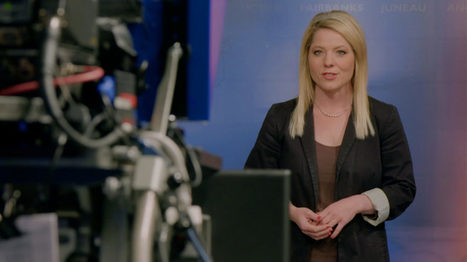

















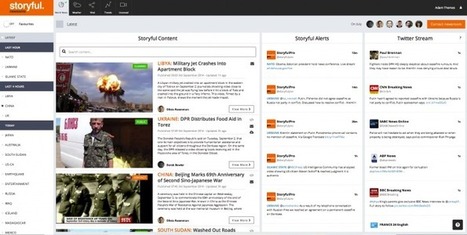


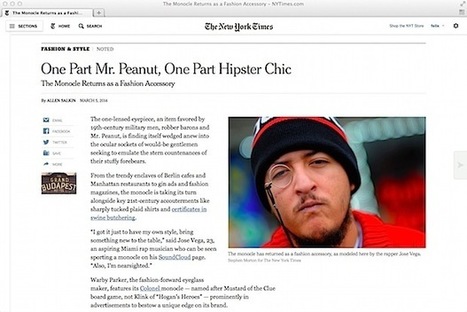

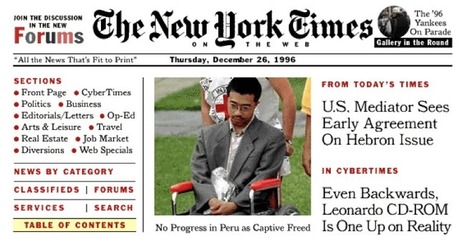

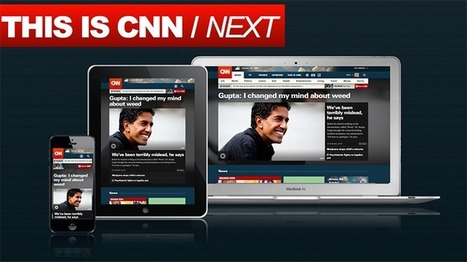





Cue and pay the citizen journalists.